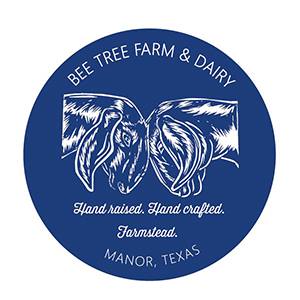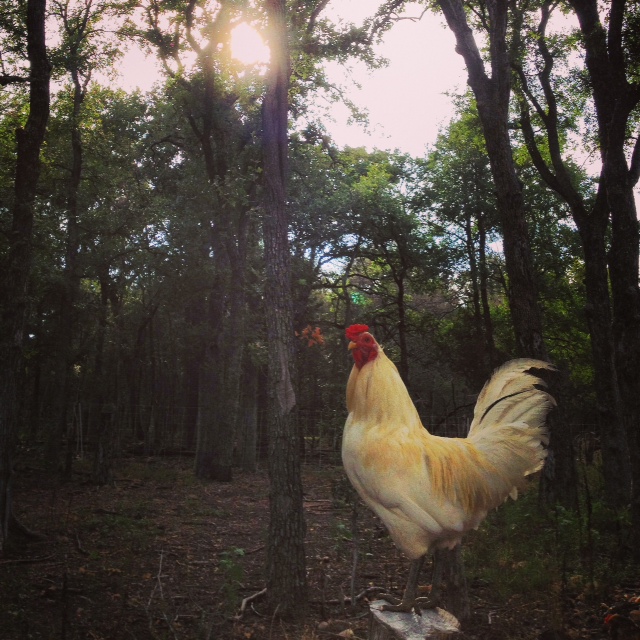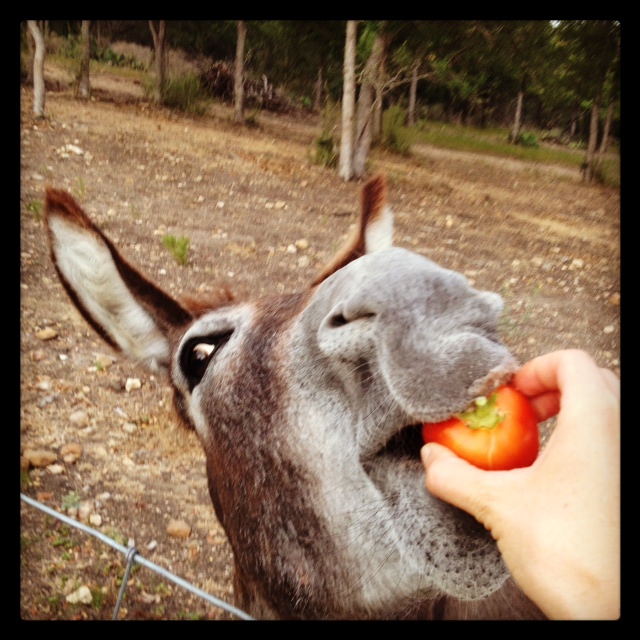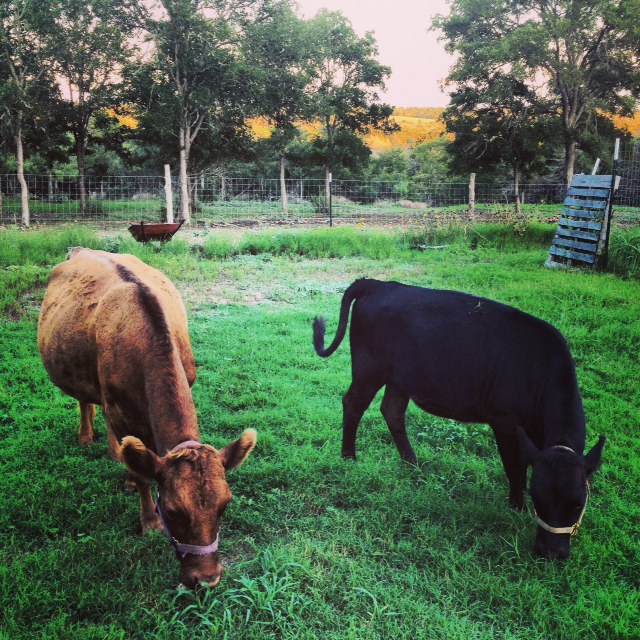Everything but the Squeal
Jeremy’s grandparents visited this weekend. I’ve mentioned them before and their long history of farming in south-central Texas. I told them about Farm School; a concept they will likely puzzle over for a bit. For them, farming was something you were born into, handed a crow bar at the age of ten to wack at post holes and rip up roots. Farm kids were given the tedious jobs of shaving the hair off a boiled hog’s skin or hauling jars of cream down to the general store to sell. I wondered to them, “Do we seem foolish out here?” and they laughed at the implicit comparison – how on earth could what we do here come anywhere near the life they willingly left over 60 years ago. It was such hard work that Gramps enlisted with enthusiasm. Surely the army would be a respite. Can you imagine? I can’t imagine.
So here it is almost one week after Farm School: Day 3 with no report, not because there was nothing to report but maybe because what we learned this week was so basic, so obvious that I feel silly repeating it here. But here it is: compost. The only magic needed for growing is compost. The state’s fruit and vegetable specialists gave incredibly interesting talks after we visited Boggy Creek Farm in the morning, getting a brief overview of the Sayles’ philosophy and success, carving out a piece of east Austin until it became a truly glorious urban farm. The theme of the day was about growing vegetables and fruits and – although we got into basic levels of science – the most valuable information was delivered exactly like this: “Better to plant a $1 plant into a $10 hole then a $10 plant into a $1 hole.” Spoil your soil. Compost like you’re growing gold, and feed the soil. The other details, although meaningful, are secondary to this rule of thumb.
I mentioned all this to Granny, how we talked about the value of “closed-system farming” where everything needed to grow animals, vegetables and minerals exists within the farm universe; each piece feeding each other through compost, the resulting produce, the resulting meat and dairy, the resulting waste, and on and on. These days, it’s harder to find a truly symbiotic system and supplemental waste needs to come in from the outside to feed the compost (therefore feeding the soil). And the lesson is the same I routinely discover the more we try to do things with our hands – be it house building, or barn raising, or animal rearing, or plant growing: people mostly got this stuff right the first time, so instead of reading new information, look around for someone who did it back before you were a glimmer in anyone’s eye and ask them how tomatoes were grown. Granny shrugged when I talked about all this and said that she didn’t know what is was called – closed- system farming – symbiotic farming – or whatever – it’s just how you’re supposed to grow things. Not a “new” discovery, by any means.
Those were days before electricity, before refrigeration, when milk pails were lowered into the underground rainwater cistern and cooled below the earth, pulled up throughout the week to make butter, pour milk, and make farmstead cheeses that Granny and Gramps only remember as “cooked cheese,” the recipes for which I’d do almost anything to retrieve. I asked them about pasteurized milk and they laughed so hard that Granny clutched her belly. Fuel was precious – you didn’t waste it simmering perfectly perfect milk! Storing food without electricity in south-central Texas required creativity and a comfort with both science and faith; understanding what were natural preservatives and praying they worked. For example, sausage was tucked into buckets of lard then covered with grease, stored out in the “woodshed” and retrieved with pieces of newspapers to wipe off the lard. Gramps visibly salivated in his memory of their taste, “They were good, good, so good,” he said before casting his eyes up to the porch roof, his memory reaching back decades to what? A table made of hand hewn lumber, scattered with plates of home-made, grease-preserved sausage, slabs of farmstead cheese cut onto plates next to slices of freshly baked bread. Slathered with hand-churned butter. Washed down with thick Jersey milk, yellowed and creamy from the carotene and butterfat. Today we hunt for restaurants that serve food this local and unadulterated, reviews for these places appearing in The New York Times as front page news like gems uncovered, or forgotten worlds re-discovered.
Growing up on family farms, everything counted for something. There was zero waste and zero effort without some return. Granny and Gramps talked about how sausage was made, the excruciating labor that went into every detail, taking care that each part of a slaughtered animal was utilized. “We used everything but the squeal,” Gramps said, and then Granny smiled with understanding, “Oh yea, yea – everything but the squeal” she laughed – a saying I’ve never heard but that perfectly epitomized their childhood. Also just a philosophy, I suppose. A motto lived out for so many families when you made your own food out of necessity instead of hobby, when farmers were as important as doctors in a community.
When Jer’s grandparents leave I always linger on the front porch and look out over the little parcel, where the round bale sits and the animals congregate, where the cow birds amble alongside the cows like thoughtful gentleman with hands clasped behind their backs, inspecting the ground carefully. I feel nostalgic for a family farm I never had – most of us didn’t – and think maybe that’s all it is we’re trying to create here. A place where dinner is gathered in one basket from the grocery store outside, then poured out onto a hand hewn table that we sit around, encased in the dirt and muck of food growing. I hope we’ll always marvel at a fist of dirt made from our compost, or the egg plucked from a nestbox, or the simple gift of a full milk pail from an animal who sleeps with her head in my lap under a tree in the afternoon sun.



